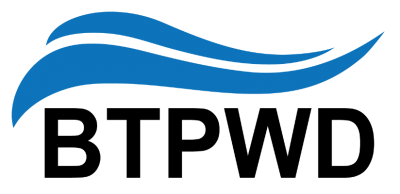To serve you better, we've assembled a list of our customers' most frequently asked questions. If you don't find your answer here, feel free to contact us.
How could I have used this much water?
Here are the things to look for that may have caused increased usage. From most common to least common:
Leaky toilet or faucet
Water Softener malfunction
Humidifier on the Furnace
Service Line Leak
Water Powered Sump Pump
What do I do if I am experiencing low pressure?
Check your meter and the surrounding area for possible leaks. Next, call our office and report low pressure for your area.
Why is my water discolored?
A repair could have been completed recently allowing air to enter the line, causing the milky look.
What chemicals does BTPWD add to the water?
BTPWD buys water from the City of Bloomington and redistributes to our customers. The City of Bloomington's water sources are Lake Bloomington and Lake Evergreen. The water is treated at the Lake Bloomington treatment plant. Please contact the City of Bloomington Water Department for more information about how they treat the water.
My water tastes, looks, and smells funny. Is it safe to drink?
BTPWD receives inquiries from time to time regarding a seasonal taste and odor change in the drinking water.
The Distict purchases water from the City of Bloomington. In addition to making sure our water is safe to drink, the City of Bloomington works hard to meet customer expectations for water’s aesthetic characteristics—its taste, odor, and appearance.
Unpleasant tastes and odors are the most common cause of customer concerns, however most contaminants that cause aesthetic problems in drinking water are not considered a threat to human health.
Please see the City of Bloomington's list of frequently asked questions about this seasonal change. Click here to download a PDF of the FAQ.
Why does debris come out of the faucet when running hot water?
Most likely your water heater needs to be flushed. CAUTION: Most manufacturers recommend hiring a professional to flush your water heater. If you plan on doing this yourself, read the owner's manual to keep from being hurt and or damaging the water heater.
Why do I have a previous balance when I know I sent in my payment?
We may have received it after the due date or we may not have received it at all. Call our office and we will help you solve the problem.
Why is there not a fire hydrant near my residence?
BTPWD is considered a rural water system and was not physically designed for fire suppression. The hydrants located throughout the system are for flushing, and were designed to maintain water quality. Fire Distircts are aware of the limitations of the system and are allowed to use water from flushing hydrants within the boundaries of BTPWD's Water Distribution System Flush Hydrant Capabilities and Use Policy.
Why is my water rust/tea-colored from hydrant flushing? Is the water safe?
Sometimes hydrant flushing can make the water temporarily appear rust-colored because the iron and mineral deposits in the water get stirred up. Water is safe to use and consume during hydrant flushing, however it may stain laundry.

